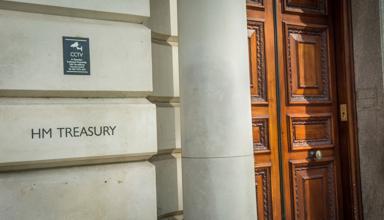On 11 June 2025, the Chancellor of the Exchequer announced the outcome of the 2025 Spending Review: what does this mean for Wales?
What is a Spending Review?
The UK Government’s Spending Reviews largely set the overall spending totals for the devolved governments as most of their funding comes from block grants they receive from the UK Government.
The annual change in block grants is mostly determined by the Barnett formula, which adjusts the grants so each administration receives broadly the same “pounds-per-person change as comparable spending changes in England”. The UK Government also makes a block grant adjustment to account for tax devolution to Wales.
Phase 1 of the Spending Review 2025, the outcome of which was announced in the Autumn Budget 2024, set UK departmental budgets for 2025-26. The UK Government launched Phase 2 in December 2024. The outcomes of which were announced in this Spending Review and set departmental budgets for revenue spending until 2028-29 and until 2029‑30 for capital investment.
Revenue funding will increase for Wales, but capital funding will decrease
The Welsh Government will receive an average of £22.4 billion each year from the UK Government between 2026-27 and 2028-29. This includes an additional £1.6 billion each year on average through the Barnett formula, comprising £1.4 billion of revenue for the next three years and £200 million of capital for the next four years.
The UK Government says the Welsh Government’s revenue budget (which funds ‘day to day’ departmental spending) will increase by an annual average of 0.9% in real terms over 2025-26 to 2028-29. Scotland will see average annual real terms growth of 0.8% and Northern Ireland average annual real terms growth of 0.4% over the same period. Whilst the Welsh Government’s capital budget will decrease by an annual average of 0.9% in real terms between 2025-26 to 2029-30, its counterparts in Scotland and Northern Ireland will see increases over the same period (average annual growth rate of 0.3% and 0.7%, respectively, over the same period).
The UK Government says “the Welsh Government will continue to get over 20% more funding per head than the equivalent UK Government spending across the UK”.
Wales Fiscal Analysis (‘WFA’) said, over the current UK Parliament (2023-24 to 2028-29), the Welsh Government’s revenue budget will grow comparatively less than it did in the previous parliamentary term (2018-19 to 2023-24).
£445 million announced for “rail enhancements” in Wales
The UK Government has committed to invest at least £445 million for railways in Wales over 10 years. This includes £302 million for the Burns Review stations, North Wales Level Crossing, Padeswood Sidings and Cardiff West Junction. It also includes £48 million to the Welsh Government to upgrade the Core Valleys Lines rail network and increase connectivity across Wales, as well as £95m through the ten-year Infrastructure Strategy.
The Cabinet Secretary said the announcement “begins to address the historical underfunding of rail investment in Wales”.
However, WFA described, the rail funding as “underwhelming” in the context of the loss of consequentials from HS2 being classified as an England and Wales project rather than an England only project. WFA estimates the total loss from HS2 between 2016-17 and 2029-30 now stands at £845 million, and “will continue to grow significantly at future Spending Reviews”.
The Barnett formula is a point of contention when it comes to rail-related spending in Wales, controversially in relation to HS2. The same issue is now being raised in relation to the East-West Rail project.
The Statement of Funding Policy provides comparability factors, which are used in the Barnett formula to calculate the relevant allocations for devolved governments.
Unlike Scotland and Northern Ireland, Wales doesn’t receive block grant allocation in key spending areas such as HS2, network rail and rail projects because Welsh rail infrastructure planning and funding, with the exception of the Welsh Government owned Core Valleys Line, are reserved. Therefore, the UK Government applies a 0% comparability factor to these areas.
The Statement of Funding Policy shows that Wales has a comparability factor of 33.5% on average with an increase in the UK Government funding for the Department for Transport. This compares comparability factor of 95.6% on average for both Scotland and Northern Ireland.
A further £118 million for coal tip safety
Last year, the UK Autumn Budget included £25 million for the Welsh Government for coal tip safety. A further £118 million has been announced in this Spending Review . The Welsh Government previously estimated it could cost between £500-£600 million to repair coal tips. However, it now says this was a provisional estimate and it will publish an updated figure. The Chancellor of the Exchequer, said “the £118m is what the Welsh Government asked for from the UK Government and we’ve delivered that in full”. Coal tip safety is the subject of ,the Disused Mine and Quarry Tips (Wales) Bill, currently at Stage 3 of Senedd scrutiny. The Welsh Affairs Select Committee recently heard from representatives from local authorities that there was a “disparity between the scale of the challenge and available funds” to remediate high risk coal tips.
The Cabinet Secretary highlighted the joint UK and Welsh Government investment in coal tip safety, including the funding announced in the Spending Review, now stood at over £220 million.
Local growth funding to remain at 2025-26 levels, but will be nearly 40% lower than in 2024-25
The UK Government confirmed that it would introduce a local growth fund from 2026-27 in place of the Shared Prosperity Fund (SPF), which replaced EU Structural Funds. In Wales, the UK Government Ministry of Housing, Communities and Local Government and the Wales Office will implement the fund, “working in partnership with the Welsh Government”.
In March 2023 when he was Leader of the Opposition, the Prime Minister described bypassing the Welsh Government in the SPF as an “outrage”. He committed to restoring the decision-making role for the Welsh Government, saying “It’s time for Wales to take back control”.
Members have expressed concerns about whether the UK Government will honour this commitment, given the wording in the Spending Review documentation. On 18 June 2025, the First Minister told the Senedd’s Culture, Communications, Welsh Language, Sport, and International Relations Committee she had “categorical assurance from the Secretary of State for Wales that this will be decided and managed by the Welsh Government”, adding “I have made it absolutely clear that we will be holding their [the UK Government’s] feet to the fire on this”. The operational details of the fund are not yet clear.
The UK Government says Wales will receive the same amount of funding in cash terms (£211 million per year) in each of the next three financial years as it has through the SPF in 2025-26. However, Wales will receive 38% less through the local growth fund in 2026-27 than the £343 million received through the SPF in 2024-25, as the UK Government’s Autumn Budget 2024 continued the SPF “at a reduced level for a transition year” in 2025-26. It appears the funding will also cover a wider range of areas than the SPF, as it includes investment in a Welsh share of the UK Government’s proposals to invest in community cohesion, regeneration and improving the public realm.
What happens next?
The Cabinet Secretary said the Welsh Government will work with the UK Government to “identify the details of the Spending Review” and what the implications are for Wales. He is due to make a statement setting out the Welsh Government’s approach to their next Draft Budget on 1 July.
Article by Božo Lugonja, Gareth Thomas and Christian Tipples, Senedd Research, Welsh Parliament.






